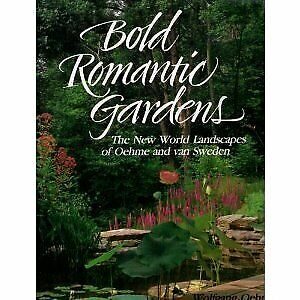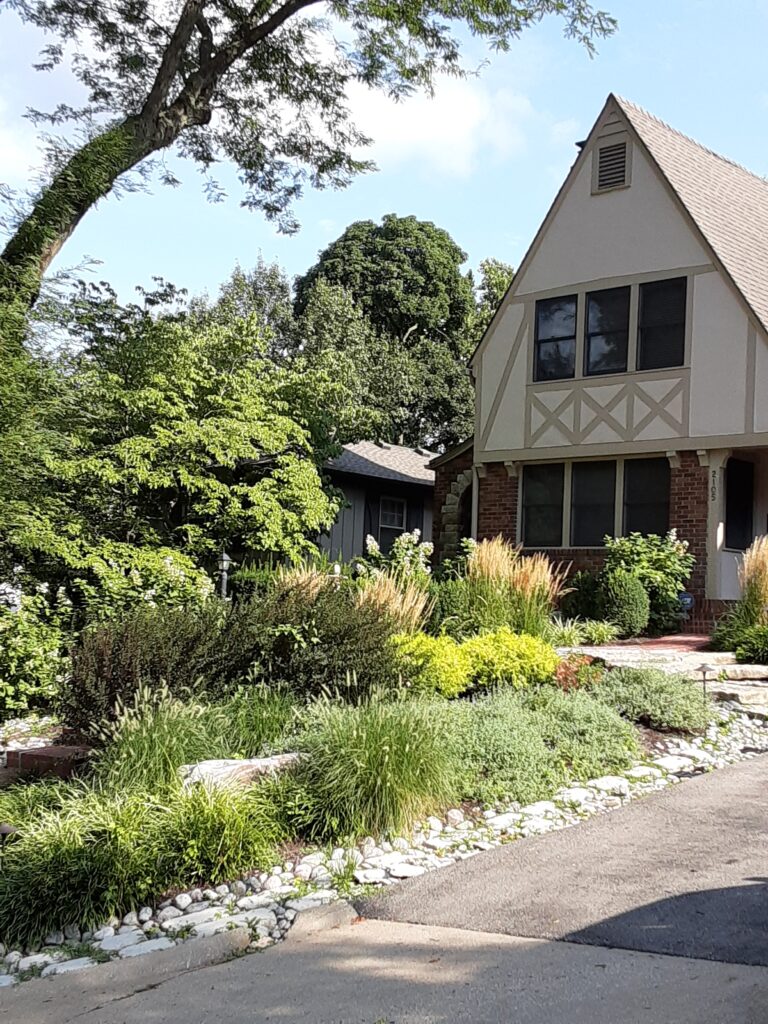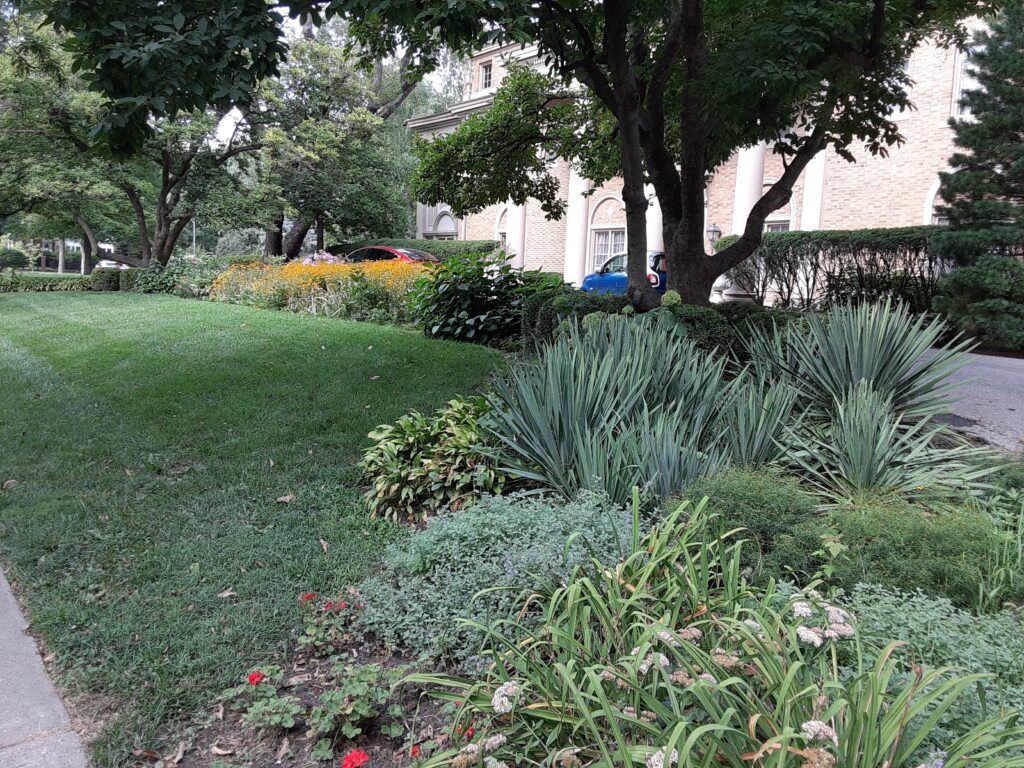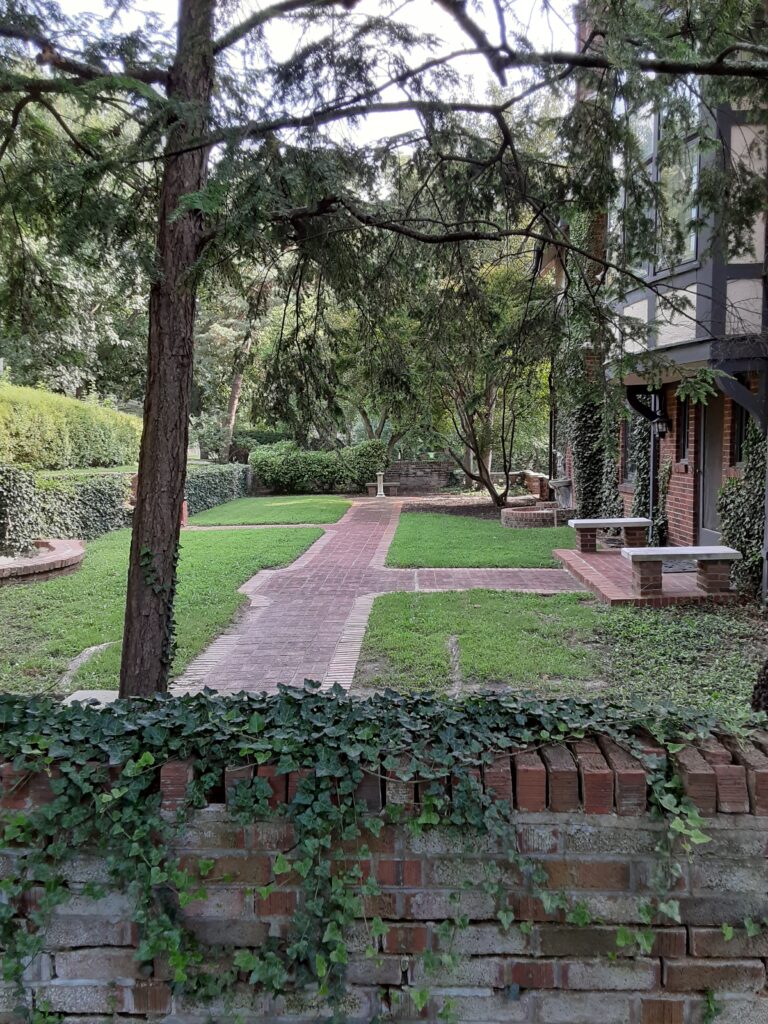Suddenly nervous about exposing the depths of my gardening ignorance, I checked out a book.
Apparently, Bold Romantic Gardens, published in 1990 by Wolfgang Oehme and James van Sweden, “revolutionized” landscape gardening with their preference for grasses and perennials– not mixed as in a prairie but planted in masses. Called the “New American Garden” style, their approach was the subject of a 25th anniversary retrospective project by The Cultural Landscape Foundation in 2015.
Looking at the photographs in the book, I sense something dated about them. The high contrast between the masses of red and yellow tulips and the brown bark mulch feels like the 1980’s—like an oriental rug with a green background.

Designing for four-season interest and the preference for perennials have endured. I recognize most of the plants listed in their glossary of favorites, although I suspect that in 1990 these would have been less familiar to people.
The authors call the traditional way we Americans plant evergreen bushes around the foundations of our houses “giving up”: “We utterly reject foundation planting as a waste.” (They also decry planting plants in a straight line anywhere.) Instead they advocate placing tall plants nearer the street, a little ways away from the house, to create a sense of enclosure, a garden “room.”
In addition to photographs, the book includes some actual garden plans, which is helpful to me because I have a hard time imagining what you actually have to do to get these effects. It would be even more helpful if the plans included the numbers of plants used.
How much of an impact did they have? On my jog this morning I looked for examples of their approach. I live in an established, one-hundred-year-old suburb, where many of the plantings date from thirty years ago. Van Sweden’s New York Times obituary says that “legions of designers and home gardeners embraced the firm’s style,” but I find little evidence of this in my neighborhoods. The lawn is alive and well.

Could this be an example of what Oehme and van Sweden mean by “reclaim the lawn?” (I think it might be.)
Most plantings I see that aren’t beside a house are borders that do things like screen a front walk or circle driveway.

I doubt that’s quite what they had in mind as the “New American Front Yard.” I imagine they’re thinking more along the lines of this Kansas City house, built in 1910.
With a little TLC, I could see this becoming an exquisite garden room.
